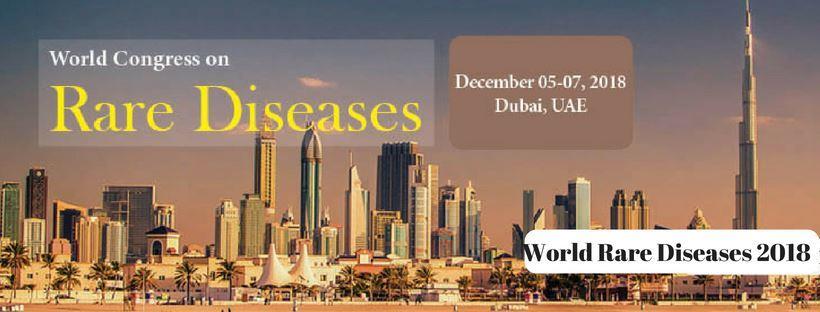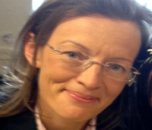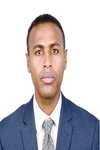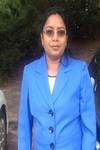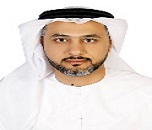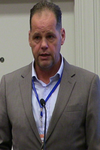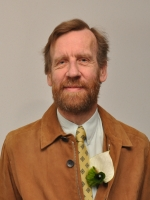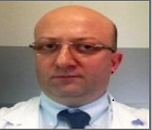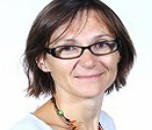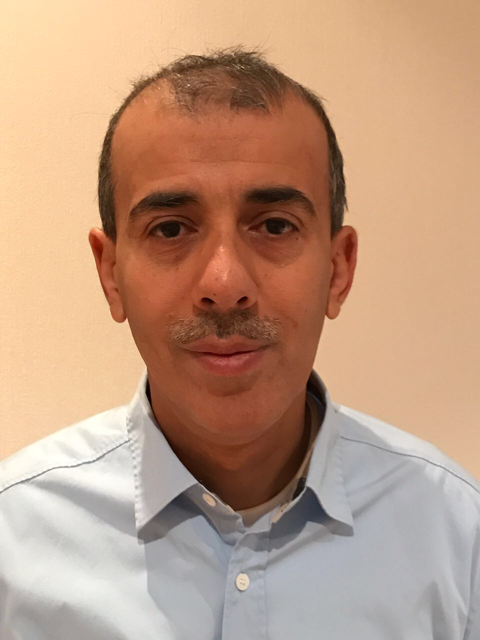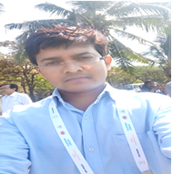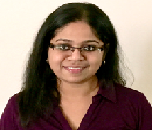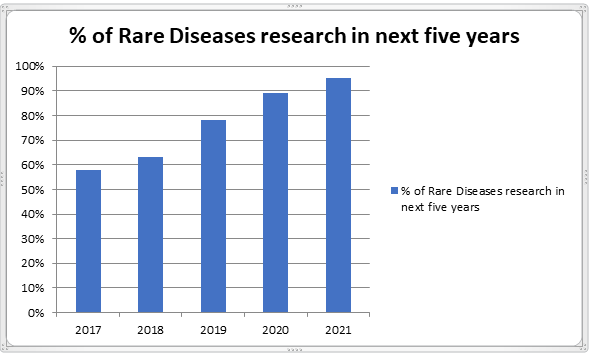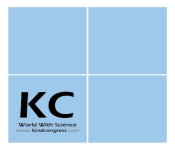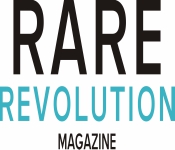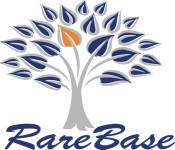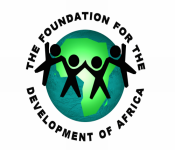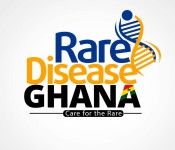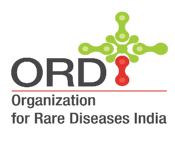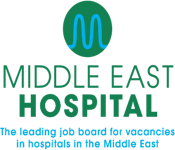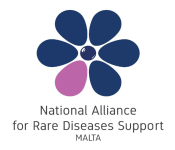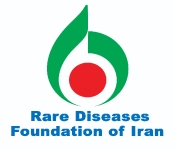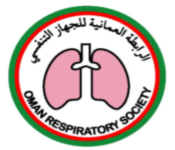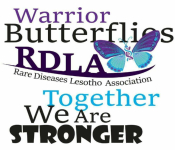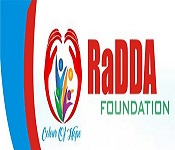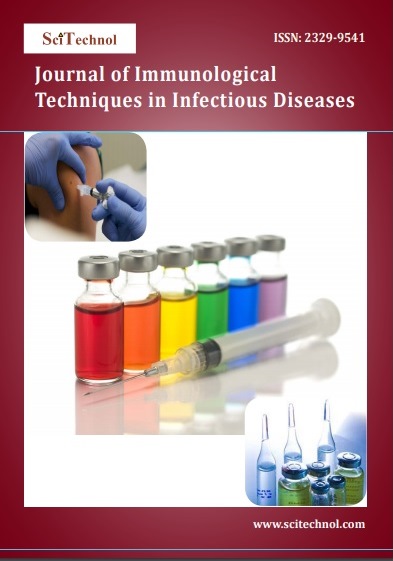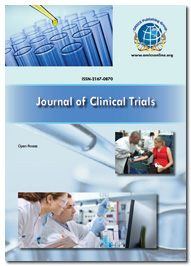Theme: Fighting Rare Diseases with Innovative Techniques
World Rare Diseases 2018
“You are Resilient, You are Rare, You are Menacing’’
Rare Diseases ME Conferences takes a lot of privilege in welcoming all the participants from all the over the world to attend WORLD CONGRESS ON RARE DISEASES 2018 will be held from December 5-7, 2018 in Dubai, UAE, Which includes provoke Keynote Presentations, Extraordinary Sessions, Workshops, Symposiums, Oral talks, Poster Presentations and Exhibitions..
Rare Diseases gives the premier interdisciplinary gathering for Microbiologists, Bacteriologists, Virologists, Pharmacists, Neurologist, Cardiologist and Healthcare Experts to present their latest research results, thoughts, developments, emerging innovation and applications in all areas of rare diseases and orphan drugs.
Why to attend?
World Rare Diseases 2018 is giving a worldwide stage to analysts that afford new insights into the concealed rare diseases. This conference will feature a global audience of scientific leaders, academia and health care professionals, and Orphan Drugs experts who are going to discuss today’s emerging treatments and diagnostics. It is designed to provide an educational forum that stimulates clinical, research, government and patient communities to create a coordinated and comprehensive approach for advancing the implementation of research, clinical care, care delivery coordination and other public health interventions critical to improved outcomes in Rare Diseases.
Target Audience
- Bacteriologists
- Microbiologists
- Virologists
- Pharmacists
- Epidemiologists
- Dermatologists
- Neurologist
- Ophthalmologist
- Cardiologist
- Rare Disease Associations and Societies
- Medical Colleges
- Pharmaceutical Companies and Industries
- Health care professionals
- Students
- Scientists
- Researchers
- Training institutes
- Drug manufacturing companies
Track 1: Rare Diseases
A Rare disease is any disease that affects a very less number of the population. Most rare diseases are hereditary, and hence are remains through the entire life of the individual and directly caused by changes in genes or chromosomes. In some cases, hereditary changes are passed from one generation to the next. In other cases, they occur randomly in a person who is the first in a family to be diagnosed. Many rare diseases appear early in life. The exact cause for many rare diseases remains unknown. But Environmental factors, viral infections, genetic mutations, diet, smoking, or exposure to chemicals, also can play a role in rare diseases. Many rare diseases, including infections, a few rare cancers, and a few immune system infections, are not inherited. While researchers are learning more each year, the correct cause of many rare diseases is still unknown. Researches are still going on for this uncommon illness.
Track 2: Infectious Diseases
Many terms are normally used in describing the infectious diseases. Disease refers to the presence of pathology and an infectious disease is an infection caused by a microorganism. Virulence is a term referring to the power of an organism to produce disease in a particular host. Immunity refers to the degree of resistance of the host for a specific microbe. Many infectious maladies, such as measles and chickenpox, can be anticipated by vaccines. Infectious diseases can cause many distinctive symptoms. Some are so mild that you may not even notice any side effects, while others can be life-threatening. There are medicines for a few infectious diseases, but for others, such as a few viruses, you can only treat your symptoms. You can take steps to prevent many infectious maladies. There are numerous distinctive ways that you can get an infectious disease for example – through insect or animal bites, contaminated food, and water. Pregnant mothers can too pass some germs along to their babies; the infectious diseases are usually characterized by the dominant organ system involved.
Track 3: Neglected Tropical Diseases
Neglected tropical diseases are a bunch of parasitic and bacterial infectious diseases that affect more than including one billion people and cost developing economies billions of dollars every year, 836 million children. They are as often as possible clustered together topographically and people are frequently afflicted with more than one parasite or contamination. Effective control can be achieved when selected public health approaches are combined and conveyed locally. Intercessions are guided by the local epidemiology and the availability of appropriate measures to identify, anticipate and control diseases. Numerous neglected tropical diseases can be anticipated, eliminated or even annihilated with improved access to existing safe and cost-effective devices. Control depends on simple mediations that can be carried out by non-specialists also.
Track 4: Orphan Drug
Drugs that are not developed by the pharmaceutical industry for economic reasons but which respond to public health need. Orphan drugs are intended to treat diseases so rare that sponsors are reluctant to develop them under regular marketing conditions. The process from the discovery of a new molecule to its marketing is long, expensive and very uncertain. Developing a drug expecting to treat a rare disease does not allow the recovery of the capital invested for its research.
Track 5: Rare Diseases in Aging
Aging takes place in a cell, an organ, or the total organism with the passage of time. HGC syndrome begins in early childhood. It is caused by a hereditary abnormality but is usually not inherited. That is, the genetic disorders occurs on its own. It causes inelastic and wrinkled skin, baldness, and other issues usually related with aging. Most children die in their teens .The average lifespan is age 13-14; death is usually due to heart attack or stroke. Studies have appeared that 37.5% had ordinary lifespan, 25.7% potentially deadly during childbirth or before 5 years of age, 36.8% diminished lifespan.
Track 6: Rare Cancer Diseases
Rare cancers affect a very little number of people. A cancer might also be considered rare if it starts in an unusual place in the body. Or if the cancer is an unusual type and needs special treatment, caused by chromosomal abnormalities that occurs spontaneously. Specialists aren't sure what causes the mutation. Many people don't develop symptoms until later stages and the diagnosis is only made through routine blood work. When symptoms do happen, they include bleeding easily, feeling run down or tired, weight loss, pale skin and night sweats. These diseases can damage the bones, immune system, kidneys and red blood cell count.
Track 7 : Rare Diseases in Brain
Brain diseases come in diverse forms. Infections, injury, stroke and seizures some of the major categories of brain diseases. Creutzfeldt-Jakob disease (CJD) is an extremely rare degenerative brain disorder (i.e., spongiform encephalopathy) characterized by sudden development of rapidly progressive neurological and neuromuscular symptoms. In approximately 90 % of cases, CJD appears to occur randomly for no apparent reason (sporadically). Almost 10% of affected people may have a hereditary predisposition for the disorder.
Track 8: Rare Haematology Diseases
Rare haematological diseases fall into numerous subcategories, including anemia-type red blood cell conditions (e.g. sickle cell disease, beta thalassemia, Diamond-Blackfan anemia), white blood cell dysfunctions related with different malignancies ,immuno- platelet-based abnormalities that affect platelet and plasma cell disorder. Some rare blood disorders especially those that are gene-based are easy to identify with a simple test, while others require substantial analyst work to successfully diagnose. Due to the large number of blood conditions common and uncommon, haematologists tend to be skilled investigators because they need to be specialists in differential diagnosis.
Track 9: Rare Diseases in Eye and Ear
Genetic disorders are diseases that result from a change in the normal DNA sequence. Most genetic disorders are caused by multifactorial means, involving a combination of genetic and environmental factors. Thousands of human diseases are now known to be caused by single gene disorders and chromosomal abnormalities, many of which include eye and Ear etc. Retinoblastoma is a life-threatening cancer that forms in the retina. It causes the pupil to appear white instead of red when light sparkles into it. Other examples of uncommon eye diseases are Albinism, Keratoconus, and Trachoma. The ear disorders are exceptionally uncommon and your chances of creating them are thin. Cholesteatoma is a rare condition where a cyst-like growth develops in the ear. It can be a birth defect but usually occurs as a complication of long-standing ear infection. Chronic eye disease is another example of rare ear disease.
Track 10: Rare Immune system Diseases
Many associations, both national and international, have been created in later years to inform and defend patients affected by these disorders. Uncommon diseases due to changes in the immune system represent a field of medical science of great interest that is undergoing continuous expansion; these disorders have an incredible social and economic impact because they often affect young or very young people at the height of their social activities and relationships. Achondroplasia is a disorder of bone growth that prevents the changing of cartilage to bone. It is characterized by dwarfism, limited range of motion at the elbows, and normal intelligence. Most cases of achondroplasia are not inherited. When it is inherited, it follows an autosomal dominant pattern of inheritance. Approximately 80% of people who have achondroplasia have parents with normal stature and are born with the condition as a result of a new gene alteration. Each person with Achondroplasia has a 50% chance, with each pregnancy, to pass on the changed quality.
Track 11: Neurology Rare Diseases
A limited number of orphan drugs are approved for neurological conditions; many orphan drugs are in development. Rare diseases in neurology can seem generally common to neurologists since, like many specialists, they often get referrals from common practitioners or other neurologists. Fast progress can take place not only in the understanding of the genetic origin and diagnosis of rare neurological diseases, but also in treatment. Examples of rare neurological conditions are amyotrophic lateral sclerosis (ALS), Duchene muscular dystrophy, and Huntington's disease. In addition, other rare diseases, including cerebrovascular diseases, neurometabolic disorders, neuromuscular disorders and neurodegenerative disorders.
Track 12: Rare Diseases in Endocrine system
There are many rare endocrine system diseases. Addison's infection is very uncommon. According to the National Organizing of Wellbeing, more than 175 distinct rare diseases affect the endocrine system, a complex system of organs and glands that employs around 30 distinctive hormones to influence a range of vital functions including growth, metabolism, heart function, and fertility. Rare endocrine diseases can potentially affect any organ system.
Track 13: Rare Gastrointestinal Diseases
A condition that affects the stomach muscles and prevents proper stomach emptying. Gastroparesis can affect digestion. The cause might be damage to a nerve that controls stomach muscles. This disorder shows Symptoms including nausea and a full feeling after small food is eaten. Gastroparesis is a condition in which your stomach cannot empty itself of food in a normal design. It can be caused by harm to the vagus nerve, which controls the digestive system.
Track 14: Rare Paediatric Diseases
The disease is a serious or life-threatening disease in which the serious or life-threatening manifestations primarily affect individuals aged from birth to 18 years, including age groups often called neonates, infants, children, and adolescents.Achondrogenesis is one of the example of paediatric rare diseases.
Track 15: Plant Pathology
In plant diseases, the causal agent maybe a fungus, virus, bacterium or a parasitic flowering plant. The progression of symptoms is one of the most vital characteristics related with problems caused by biotic agents. The quantitative aspects of plant infection and colonisation by viruses were mostly addressed during the early period of plant virology. Begomoviruses rank among the top of the most critical plant viruses causing disease of severe results in crops. Wheat flag smut is an example of plant rare diseases; symptoms include poor head development; and long, linear, greyish lesions on the flag leaf.
Track 16: Challenges in Rare Diseases
Making a pharmaceutical care development program for the treatment of a uncommon disease can, however, prove to be a monumental task. Poor understanding of the characteristic history of the proposed indication due to few observational studies considering disease progression, heterogeneous patient populations with variable phenotypes and clinical courses, geographic dispersion of patients and investigators, regulatory uncertainties, and lack of prior clinical studies to establish a format for study execution, can all prove challenging. While individually rare, orphan diseases are really collectively common, with an estimated 350 million sufferers around the world.
Track 17: Clinical Research on Rare Diseases
Rare diseases provide opportunities to study human physiology and biomedical science from interesting perspectives. Major scientific breakthroughs resulting from investigation of rare diseases have regularly given knowledge into more common disorders. The satisfaction of diagnosing a patient with a uncommon disorder successfully is often rapidly countered by the realization that the capacity to understand and treat the patient’s condition is limited by ignorance and the difficulties of studying the disease. Additionally, for the “interesting” patient with a uncommon disease, being a fascinoma to physicians may intensify suffering.
Track 18: Treatment for Rare Diseases
Knowledge of the natural history of these diseases is improved by the creation of registries. Researchers are increasingly working through networks in order to share the results of their research and to advance more effectively. An orphan drug is a medicinal product developed for the treatment of a rare disease. For all rare diseases, science can provide some answers.
Track 19: Living with a Rare Diseases
Most rare diseases have no cure, so living with a rare infection is an on-going learning experience for patients and families. Day-by-day, hand-in-hand, together we present a united voice to advocate for the treatments, care, resources and services we all need. Patients, families and organisations are pivotal for making solutions for the day by day challenges of living with a rare disease. It is essential to send a strong message of solidarity to the countless rare disease patients and families throughout the whole world. Together, we can change the person experience of patients and relatives around the world into collective actions, support, promotion and community building.
Track 20: Mystery Diagnosis of Rare Diseases
Rare diseases affect an estimated 2-4% of the population. A likely next step is whole genome sequencing, a diagnostic technique that over the last decade has significantly bolstered the effort to identify undiscovered diseases. A different approach is to search for patients with similar hereditary abnormalities and similar side effects. Determining the cause of a malady is often a victory in its own right for people who’ve spent years trying to figure out what’s wrong with their bodies.
Track 21: Future of Rare Diseases Research
It is still a reality for rare disease patients to spend years in the health care system before an accurate diagnosis is made. Next-generation sequencing and improved data sharing have resulted in faster discovery of gene disease and thus diagnostics. However the rate of gene disease discovery is now slowing probably as a consequence of the likely complex origin of the remaining unsolved disease. To face this challenge, new methods in particular addressing non coding region of the genome will need to be developed. In addition, even if the rate of rare disease therapeutic development and approval has been increasing, 94% of rare diseases still need an approved treatment. In addition, the number of untreatable uncommon diseases that have a first treatment approved remains low and even when a treatment is available, patients do not have always a ensured access to it. To face therapeutic discovery challenges, new approaches such as data-mining and repurposing and new models for funding drug discovery and covering treatment costs will be needed.
Importance & Scope:
There are more than 7,000 classified rare diseases and 70% of them have no type of treatment, there are extensive neglected needs around there. Administrative advantages, for example, longer market selectiveness, leap forward assignments, diminished expenses and assessment motivators are all reassuring speculation. In any case, the promoting procedure and lifecycle for an uncommon infection medication are altogether different to a mass market item and require specific abilities and information.
World Rare Diseases 2018 will be the best platform for all the specialists and super specialists, renowned Scientists, research scholars, students who are working in this field across the globe under a single place to exchange their knowledge on Rare diseases. This event is an effort to find an alternative for invasive imaging technique against diseases like haemophilia, cystic fibrosis, lupus, motor neurone disease, acromegaly, Fragile X syndrome, Gaucher’s disease and Gorlin’s syndrome, as well as many others. These diseases often referred to as orphan diseases. Affect only a small portion of the population .The number of diseases for which no treatment is currently available is estimated to be between 4,000 to 5,000 worldwide. Orphan drugs are medicinal products which are used for the treatment of diseases or conditions which affect a very small portion of the population which are known to be rare diseases like infectious diseases, Genetic Diseases and Etc.

Why Dubai?
Dubai is considered as an important centre for higher education healthcare, well reputed and prestigious colleges and Universities. Dubai conferences undoubtedly play a crucial part in promoting scientific data and ideas all over the world.. It can be considered as a reasonable medium for the migration of important knowledge about research and novel advancements around the world. The conferences taking part here would promote a variety of scientific thoughts to diverse areas of science and innovation.
Success probabilities for Rare Diseases vs. All Diseases
Most of the rare diseases are already recognized and their diagnosis is also there, while technological progresses made it simpler to identify rare diseases and develop the complex biological molecules often required to treat them. Now a day’s rare disease are not so rare.

The leading researchers, specialists, Scientists are trying their best to fight with this rare diseases and to get out of it. The research is going on but public awareness, diagnosis are also important factor that we have to pay attention.
Among the couple of rare diseases studied it is found that 18%had ordinary lifespan 44%possibly deadly during childbirth or before 5 years old -44% adult , depending on the seriousness, penetrance or type (child, juvenile or adult types) of the disease and 78% due to genetic disorder.
Universities in UAE:
1. Gulf Medical University
2. Ras al-Khaimah Medical and Health Sciences University
3. Dubai Medical College
4. College Of Medicine and Health Sciences
5. United Arab Emirates University
6. American University of Sharjah
7. University of Sharjah
8. Masdar Institute of Science and Technology
9. Abu Dhabi University
10. Dubai Pharmacy College
Hospitals in UAE:
Zulekha Hospital Sharjah
Emirates Hospital
Dubai Hospital (Govt)
Rashid Hospital (Govt)
Medcare Hospital
Canadian Specialist Hospital
Cosmolaser Medical Center
Al Zahra Hospital Sharjah
University Hospital Sharjah
Al Amanah Medical Center
Sunny Medical Centre LLC, Shahba
New Sunny Medical Centre LLC, Rolla
Al Salam Medical Center
Dr Fatima Nooh Medical Center LLC
Aster Medical Centre – Sharjah
Marina Medical Centre – Sharjah
Pharmaceutical companies in UAE :
Global Pharma
Pharmatrade L.L.C
Boehringer Ingelheim
Al Hayat Pharmaceuticals Company
Medpharma
Life Pharma FZE
Gulf Pharmaceutical Industries
Mylan
Clinart International
Pharmaworld LLC
Industries Associated with Rare Diseases Research Worldwide
· AbbVie
· Actelion
· Alexion
· Amgen
· Baxter
· Bayer
· Biogen
· BioMarin
· Bioxcel
· Celgene
· cydan
· Medivir
· Merck
· Novartis
· Pfizer
· PhRMA
· Roche
· Shire
· Takeda
· Teva
Europe: Infectious Diseases Society of Ireland, Ireland; The International Society for Neglected Tropical Diseases, United Kingdom; HealthCare Infection Society, London; Society of Infectious Disease; Spanish Society of Paediatric Infectious Diseases, Spain; Spanish Society of Paediatric Clinical immunology and Allergy, Spain; Spanish Association of Paediatric Primary Care, Spain, British Society for Immunology, U.K; European Society for Immunodeficiency, Switzerland.
USA: Canadian Association for Clinical Microbiology and Infectious Diseases, Canada; National Institute of Allergy and Infectious Diseases, USA; Tropical Pathology & Infectious Diseases Associations, Peru; International Society for Infectious Diseases, USA.
Asia Pacific: Victorian Infection Control Association, Australia; Victorian Infection Control Professionals Association, Australia; Infection Control Practitioners Association of Queensland, Australia; Infection Control Association of South Australia, Australia; Infection Control Association of Western Australia, Australia.
Middle East:The Arab Society of Infectious Diseases and Antimicrobials, Egypt; The Egyptian Society for Tropical Medicine, Infectious Diseases and Parasites ,Egypt; Egyptian Society of Immunologists, Egypt; Genetic Diseases Society,Abu dhabi; Gentic Diseases Society, Dubai; Molecular Biology Society, Dubai; Emirates Neurology Society, Dubai;
Related Conferences:
4th World Congress on Rare Diseases and Orphan Drugs, June 11-12, 2018 in Dublin, Ireland; 5th International congress on infectious diseases, March 1-2, 2018 Berlin Germany; 11th World Congress on Virology and Infectious Diseases, May 17-18, 2018, Tokyo, Japan; 6th International Congress on Bacteriology and Infectious Diseases , May 21-22, 2018, New York , USA; 7th International Conference on Bacteriology and Infectious Diseases, June 4-5, 2018, Osaka, Japan; 4th World Congress on Human Genetics and Genetic Diseases, April 19-20, 2018, Dubai, UAE; Neglected Tropical Diseases Congress, October 15-17, 2018, Abu Dhabi, UAE; 14th World Conference on Infectious Diseases, Prevention and Control, October 15-16, 2018, Abu Dhabi, UAE; 6th Annual Conference on Parasitology and Infectious Diseases, October 25-26, 2018, Turkey, 4th Annual Congress on Infectious Diseases” August 29-30, 2018 Boston, USA; 5th Annual Congress on Rare Diseases and Orphan Drugs, August 29-30, 2018, Boston, USA
Conference Highlights
- Rare Disease
- Rare Diseases in Aging
- Rare Cancer Diseases
- Rare Diseases in Brain
- Rare Haematology Diseases
- Rare Diseases in Eye and Ear
- Rare Immune System Diseases
- Neurology Rare Diseases
- Rare Diseases in Endocrine System
- Rare Gastrointestinal Diseases
- Rare Pediatric Diseases
- Challenges in Rare Diseases
- Clinical Research on Rare Diseases
- Treatment for Rare Diseases
- Living with a Rare Diseases
- Mystery Diagnosis of Rare Diseases
- Future of Rare Diseases Research
- Orphan Drug
- Plant Pathology
- Infectious Diseases
- Neglected Tropical Diseases
- Rare Oral Diseases
To share your views and research, please click here to register for the Conference.
To Collaborate Scientific Professionals around the World
| Conference Date | December 05-07, 2018 | ||
| Sponsors & Exhibitors |
|
||
| Speaker Opportunity Closed | Day 1 | Day 2 | Day 3 |
| Poster Opportunity Closed | Click Here to View | ||
Useful Links
Special Issues
All accepted abstracts will be published in respective Our International Journals.
- Journal of Molecular and Genetic Medicine
- Journal of Genetic Syndromes & Gene Therapy
- Journal of Rare Disorders: Diagnosis & Therapy
Abstracts will be provided with Digital Object Identifier by

